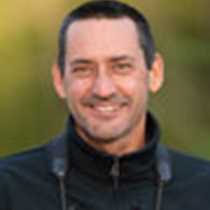Sitkoh Bay, Chatham Strait, & Frederick Sound
The waters of southeast Alaska are nutrient rich, and thus a place for abundant marine life. Throughout this voyage, we have witnessed a vast diversity of birds, fish, and marine mammals. Most of us have come on this voyage to witness this productivity and especially the abundance of marine mammals. Today would not disappoint.
An early morning wakeup call roused us all out of our cabins as killer whales had been spotted. A group of five transient orcas were slowly traveling along in Chatham Strait. One male with a massive six-foot dorsal fin led the way, while off to one side was a female-type with a small calf. Transients are mammal eaters, and while we did not see any kills take place, it was a great way to start the day for sure.
In the afternoon, we were treated to a whale presentation by Dr. Bruce Mate of Oregon State University. Bruce is a leading whale researcher, and shared some fantastic current information on dive profiles and migration patterns. Amazing 3D graphics and map animations allowed us to easily grasp a bit of the life history of a number of marine mammal species. Then it was time for the real thing!
Frederick Sound is an area with multiple currents and upwelling, and is very rich with krill. The krill spends much of the day fairly deep and migrates vertically towards the surface in the late afternoon. We passed a few humpbacks and then were attracted to one showing a bit of surface activity and being followed by a flock of phalaropes. Phalaropes are a type of shorebird that spends most of its time out at sea, feeding on krill and other plankton. The whale would surface and the flock would swoop in to pick off excess krill.
We watched this for a few minutes when the whale approached the ship, and we were able to see it blowing a ring of bubbles. The ring would rise to the surface, followed by the whale, mouth agape. It was obviously very comfortable with us sitting in neutral, as it repeatedly fed within a very close distance of our vessel. Soon, a mother and calf joined into the mix, and showed off a bit doing some side lunges. Numerous times we witnessed the pair surfacing on their sides, pectoral flippers in the air, and throat pleats fully extended. It was an amazing spectacle for sure.
To finish off our marine mammal day, we picked up whale researcher Andy Szabo. Andy is a graduate student under Bruce, and is studying the relationship between the humpbacks and their prey. He showed us how they collected their data and the equation of prey locations and predator feeding zones. Our fantastic humpback experience was right in one of his main zones for both prey and humpback action. Certainly a most memorable marine mammal day!
The waters of southeast Alaska are nutrient rich, and thus a place for abundant marine life. Throughout this voyage, we have witnessed a vast diversity of birds, fish, and marine mammals. Most of us have come on this voyage to witness this productivity and especially the abundance of marine mammals. Today would not disappoint.
An early morning wakeup call roused us all out of our cabins as killer whales had been spotted. A group of five transient orcas were slowly traveling along in Chatham Strait. One male with a massive six-foot dorsal fin led the way, while off to one side was a female-type with a small calf. Transients are mammal eaters, and while we did not see any kills take place, it was a great way to start the day for sure.
In the afternoon, we were treated to a whale presentation by Dr. Bruce Mate of Oregon State University. Bruce is a leading whale researcher, and shared some fantastic current information on dive profiles and migration patterns. Amazing 3D graphics and map animations allowed us to easily grasp a bit of the life history of a number of marine mammal species. Then it was time for the real thing!
Frederick Sound is an area with multiple currents and upwelling, and is very rich with krill. The krill spends much of the day fairly deep and migrates vertically towards the surface in the late afternoon. We passed a few humpbacks and then were attracted to one showing a bit of surface activity and being followed by a flock of phalaropes. Phalaropes are a type of shorebird that spends most of its time out at sea, feeding on krill and other plankton. The whale would surface and the flock would swoop in to pick off excess krill.
We watched this for a few minutes when the whale approached the ship, and we were able to see it blowing a ring of bubbles. The ring would rise to the surface, followed by the whale, mouth agape. It was obviously very comfortable with us sitting in neutral, as it repeatedly fed within a very close distance of our vessel. Soon, a mother and calf joined into the mix, and showed off a bit doing some side lunges. Numerous times we witnessed the pair surfacing on their sides, pectoral flippers in the air, and throat pleats fully extended. It was an amazing spectacle for sure.
To finish off our marine mammal day, we picked up whale researcher Andy Szabo. Andy is a graduate student under Bruce, and is studying the relationship between the humpbacks and their prey. He showed us how they collected their data and the equation of prey locations and predator feeding zones. Our fantastic humpback experience was right in one of his main zones for both prey and humpback action. Certainly a most memorable marine mammal day!




